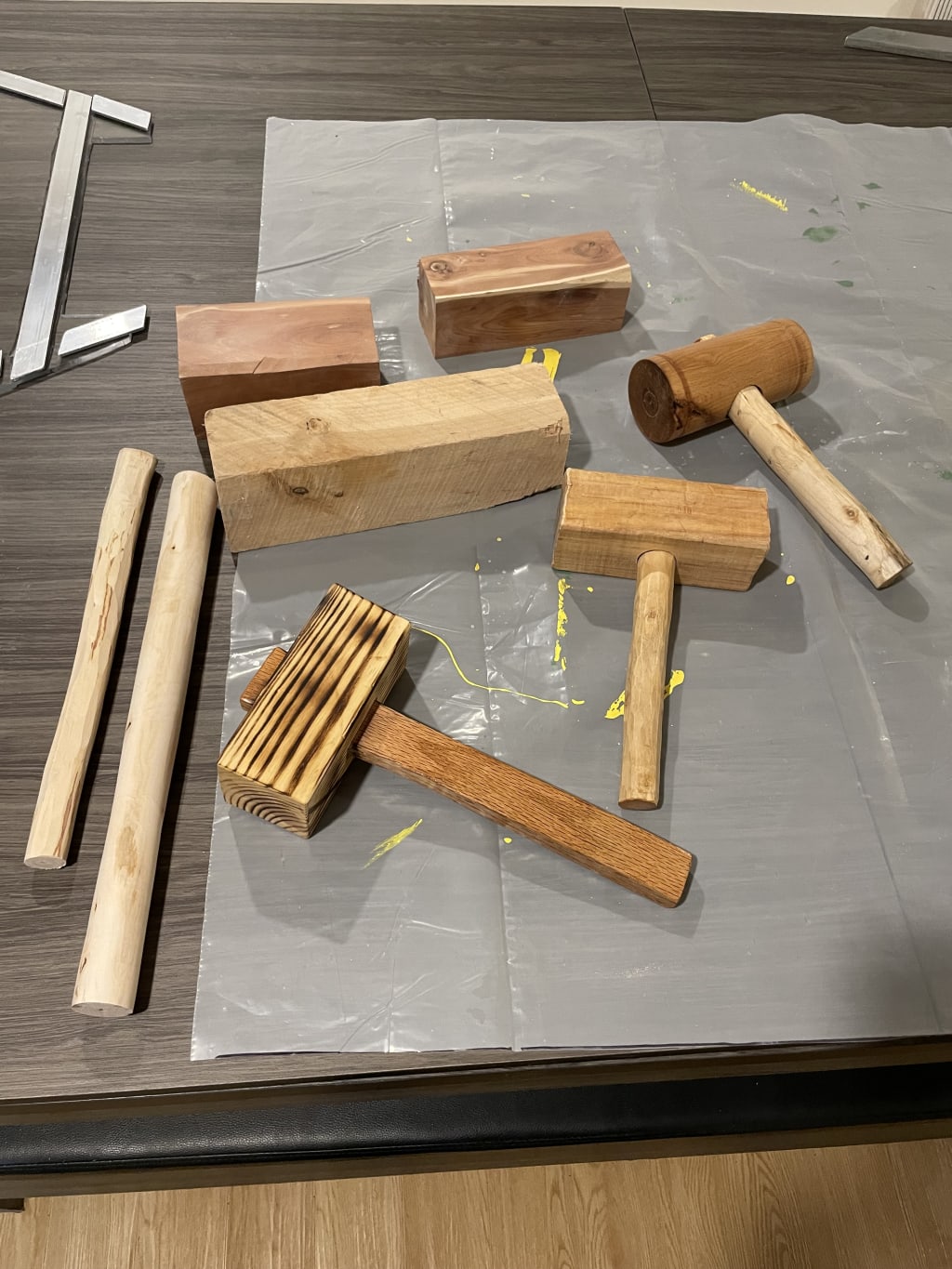Mallet Madness
The story
Jointer's. Carver's. Carpenter's. Woodworker's. Crafter's.
There are a lot of people who like to use a simple wooden mallet, and, as it turns out, it is a really nice and simple project to do yourself. In my case, however, I reached out to a few people to see if anyone needed a mallet so I could practice making them. They can be rounded or square-ish, or anywhere in between, and made from any wood that you like as long as it is strong and heavy enough for what you need.
The plan
Mallets are so easy in planning. You have a head and a handle and that's it. Everything after that is details. If you build it so the handle wants to stay in the head during use due to friction, everything is a lot easier.
The build
Starting with a failed experiment
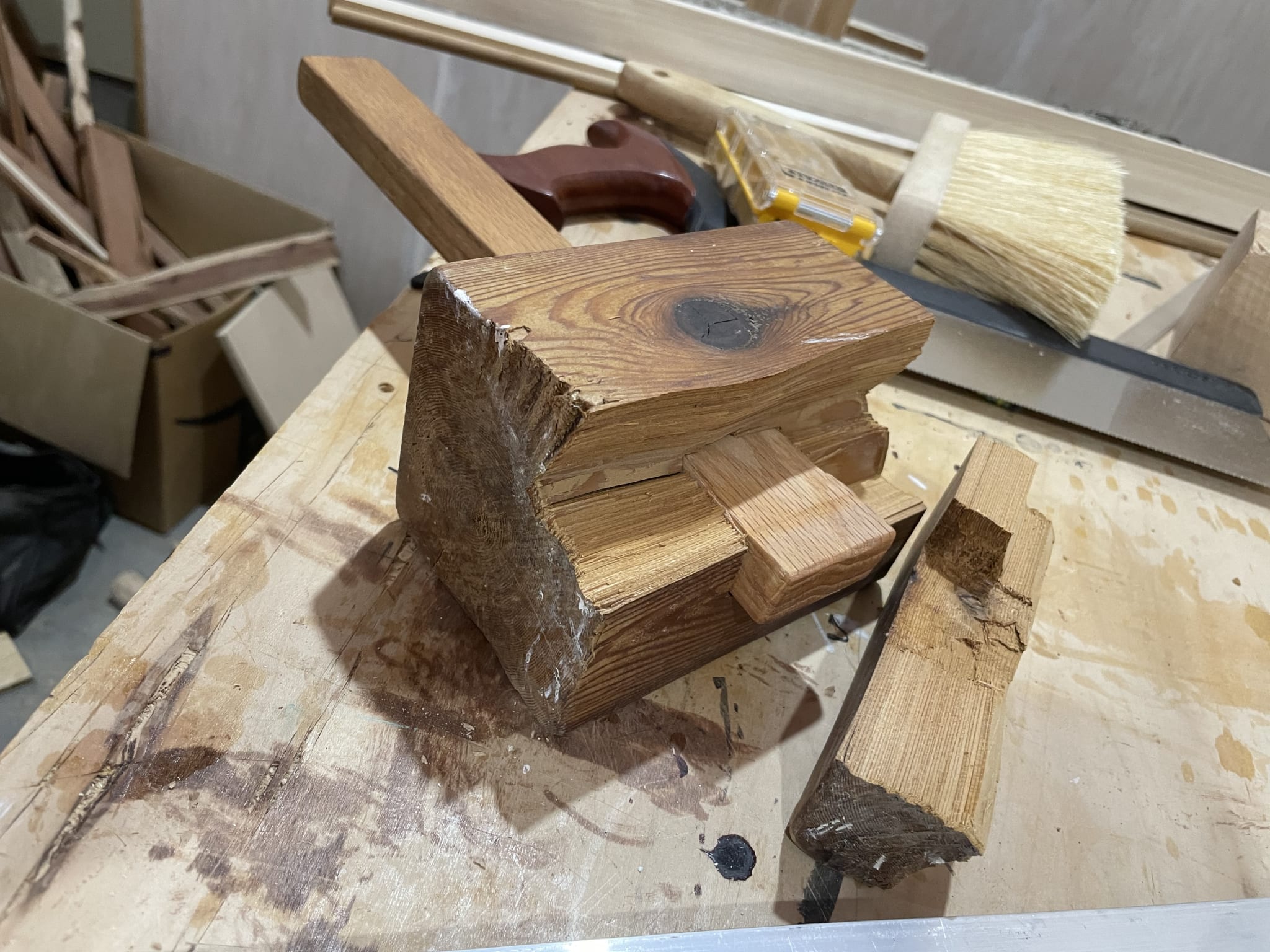
I started my mallet adventure years ago with a simple 4x4 chunk of cedar I grabbed from Lowes. I didn't want to try anything fancy since I didn't have any experience, so I went simple. Cedar block head, and an oak handle in a rectangular shape. After years of use and abuse it finally failed on me. The head broke, but the handle was fine. I can re-use the handle and cut a new head.
I happened to have a few promising pieces of wood that I snagged from my older brother's firewood stack. He happened to cut some damaged ash down, which would be perfect for a new mallet head.
Experimenting a-round
Natallia bought me a delightful lathe for my birthday/christmas and I just had to learn how to use it. I had a surprisingly squared piece of firewood that I wanted to try turning into a mallet head.
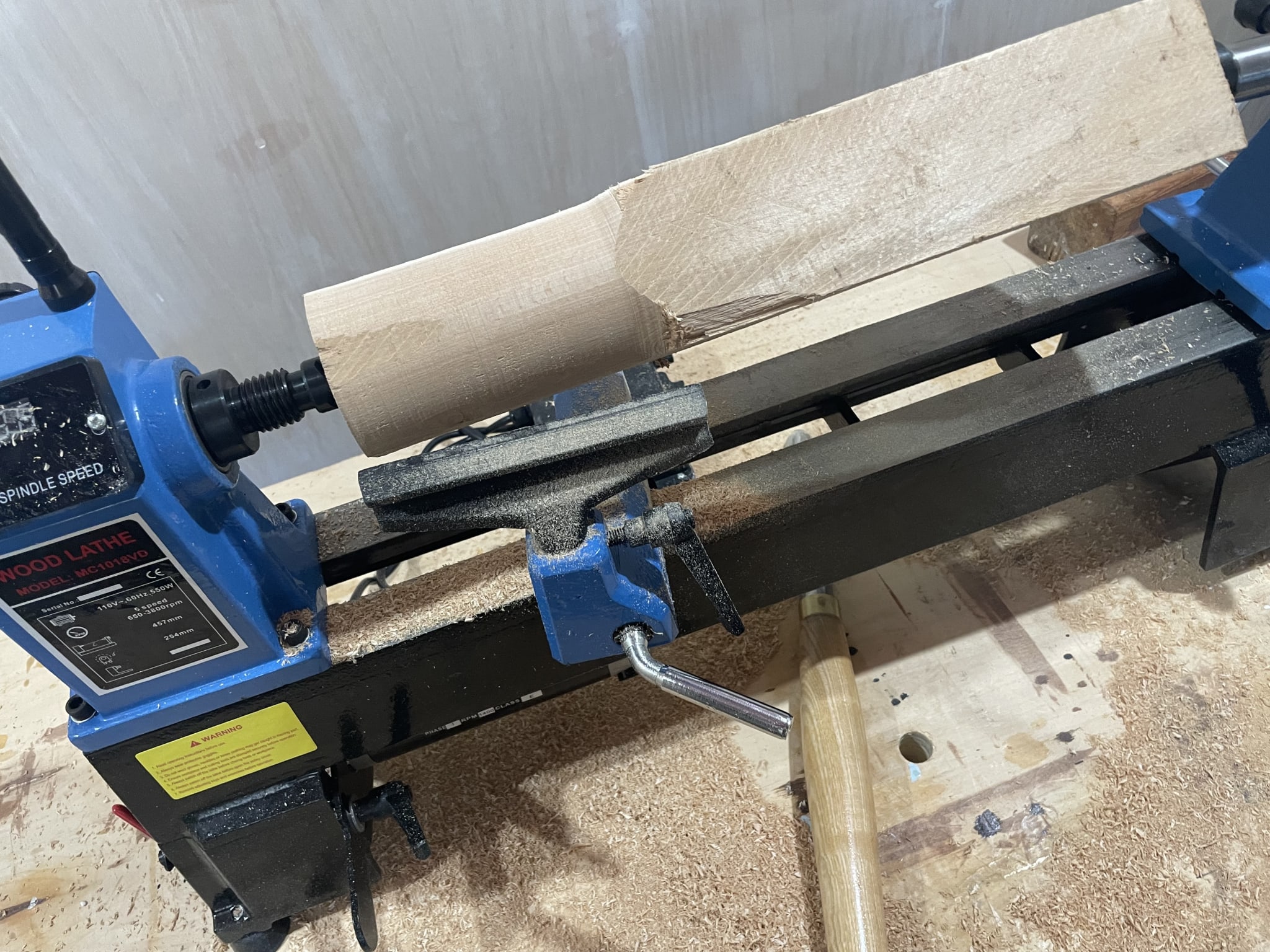
After having a fright where the head blank escaped the lathe and launched off across the shop and tried to attack Natallia I was able to cut things down to size and get it to a more reasonable size.

I had a piece of sapling lying around from ages ago that I quickly carved down into a handle. Just a small amount of oil for the exterior and it is done.
Redcedar (Juniper) mallet for a friend
My good friend Zach was interested in a new wooden mallet, and I had some good stock sitting and waiting to be used. Redcedar, also known as Juniper, is a colorful and aromatic wood that should work well for mallets. He was interested in a a mallet with a rectangular head and a rounded handle. All in all, a very straight forward setup.
First I had to turn a rectangular piece into a cylinder. Time to get out the lathe.
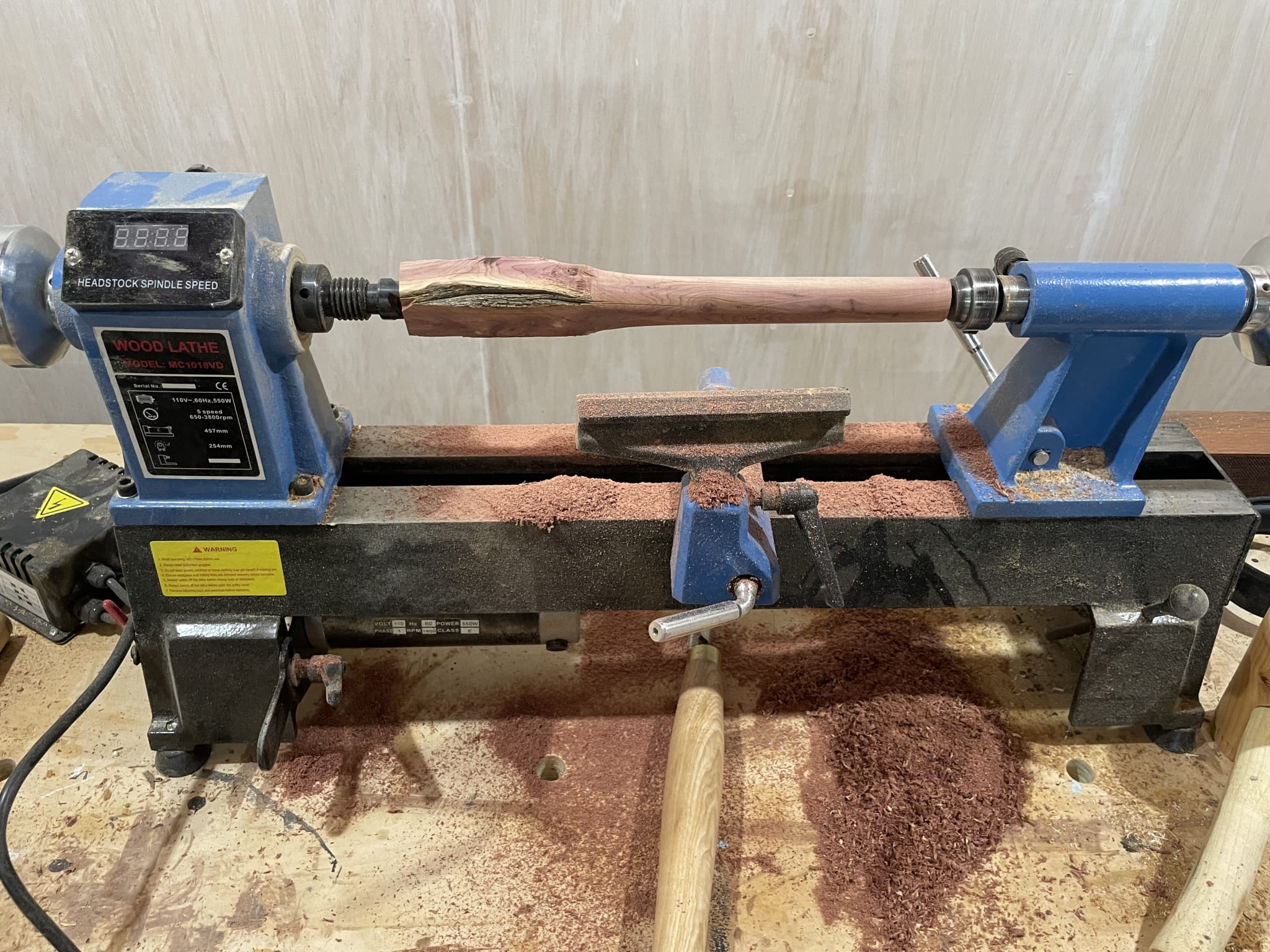
In order for the handle to not slide out, I actually need to have two different diameters. Larger for the top, and slightly smaller for the rest of the handle so friction itself could hold it in place. First I turned the handle down to the larger size and tested it wouldn't fit. Next, I turned the piece again bringing the handle to its final diameter, just barely smaller than the hole I bored in the mallet head.
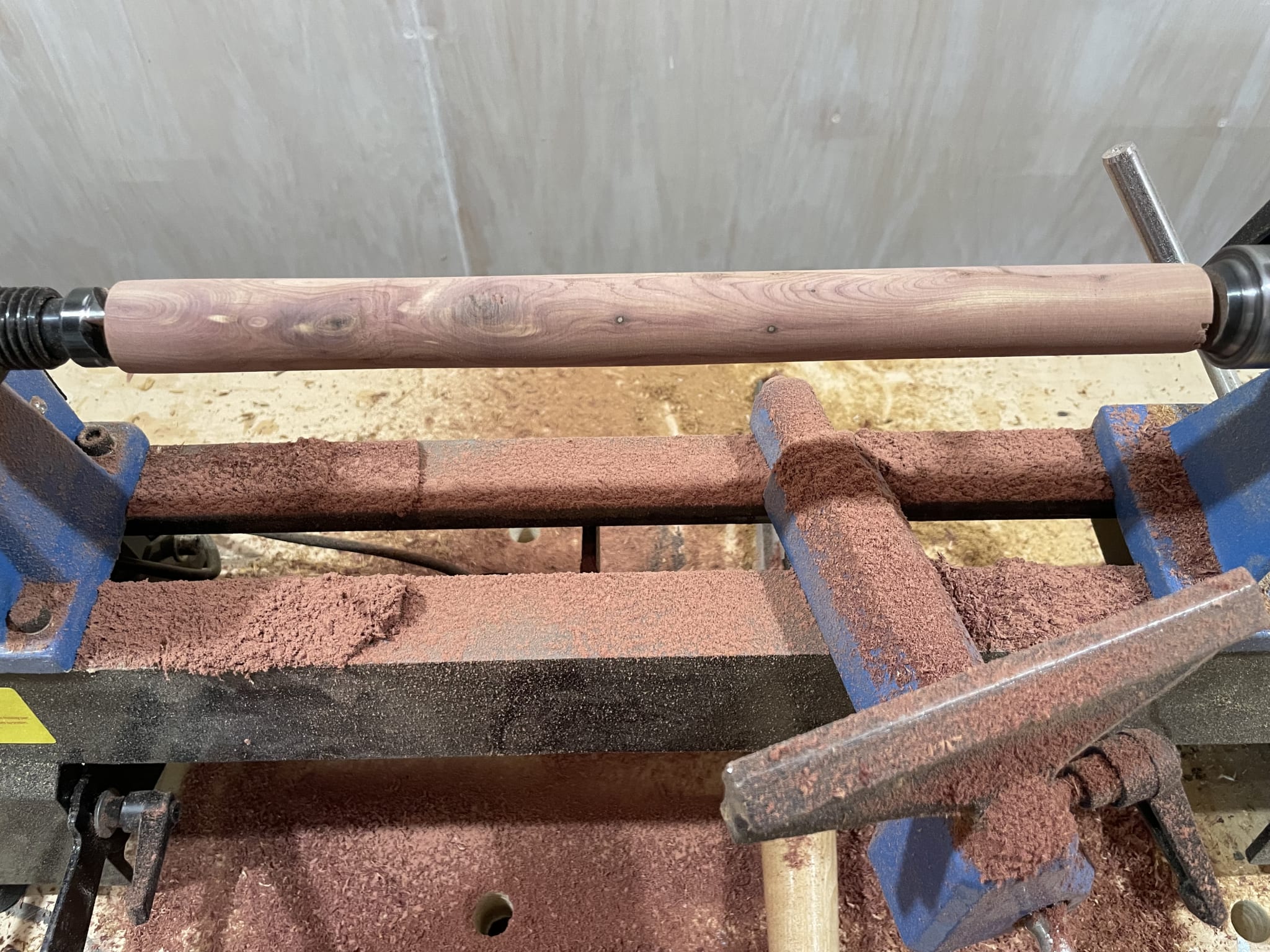
After a few small adjustments with sand paper, I got the fit I was looking for. I didn't use any glue for this setup, just friction. I finished it with two coats of Tung oil.
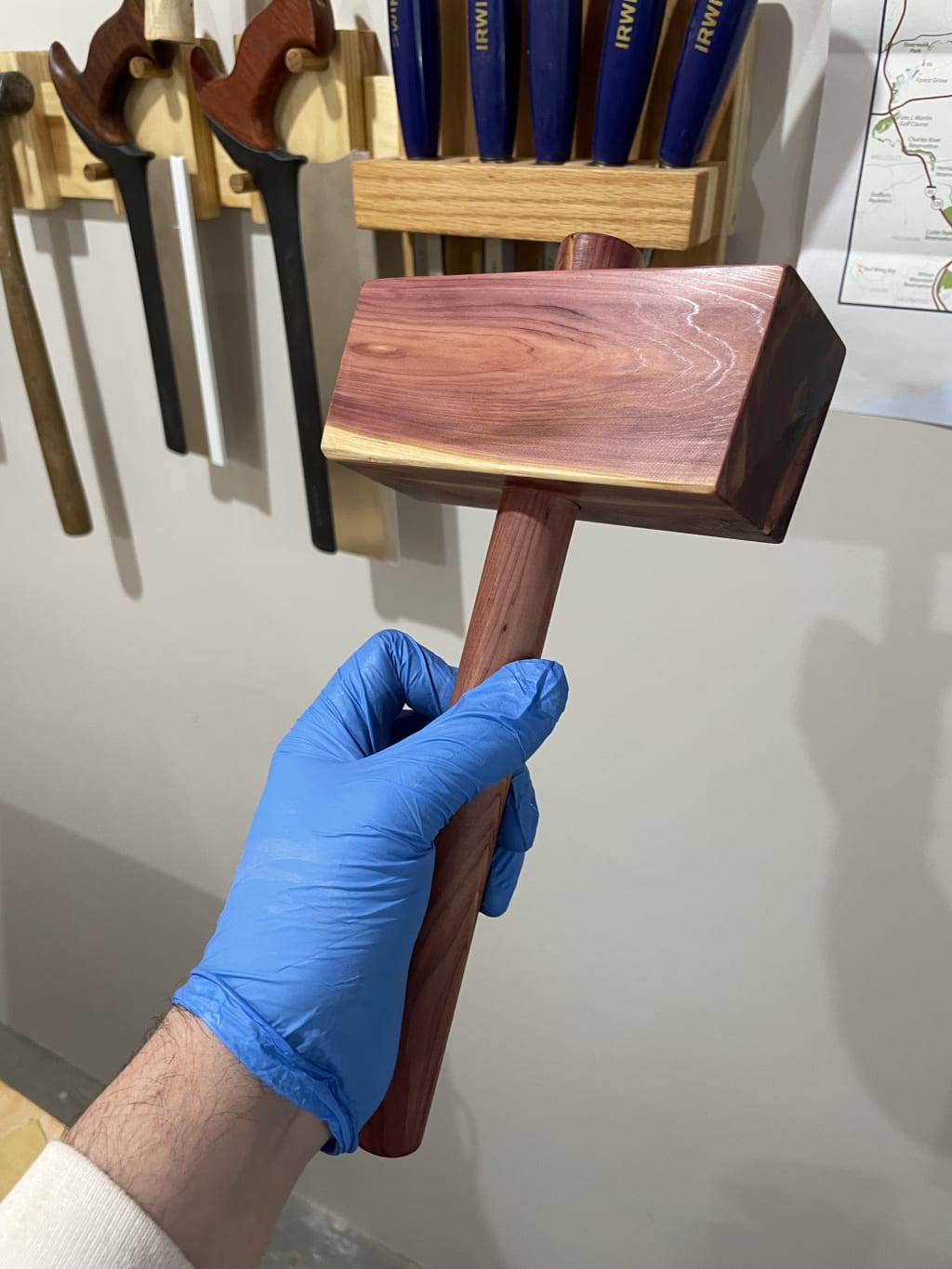
A mallet for a coworker
My co-worker, Dillon, was interested in having a wooden mallet for general purpose mallet-needs. I had a lovely piece of heavy dense firewood that was already nearly square that would be great to start with. He wanted a mallet with a round head, and round handle. I started with the handle, which was a maple sapling. I turned that to remove the bark, and get it to a proper diameter, and then moved on to the mallet head.
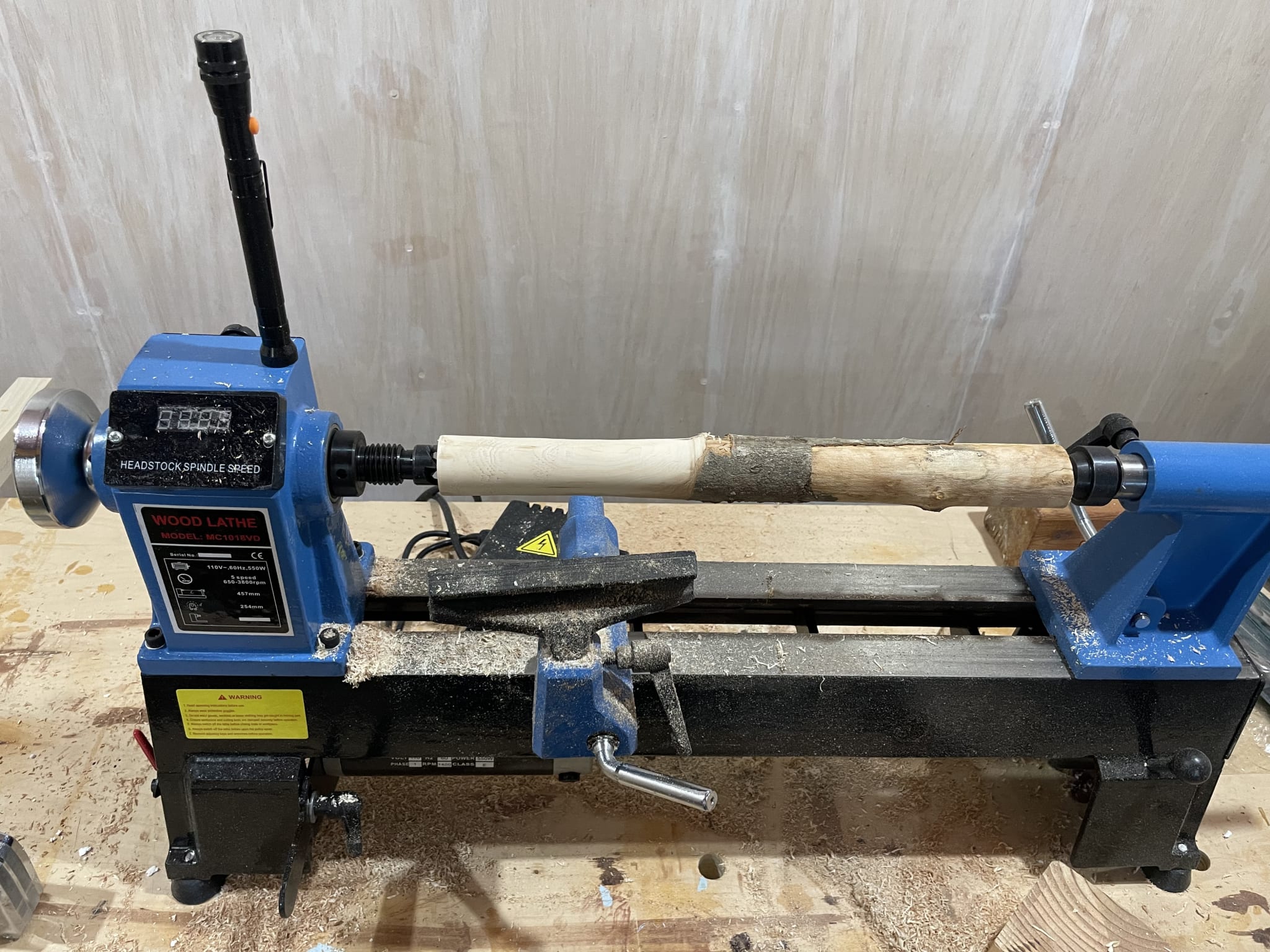
Before I get to the woodturning portion of the mallet head, I have some prep to do with the piece of firewood. First up, cut it down to a rough size with squared up planes for each face. Then drill out the handle hole.

After the handle hole was bored out, I decided to remove the corners of the mallet head with my table saw so I wouldn't have so much material to take off on the lathe. This left me with an octagonal mallet head, which actually looked pretty cool.
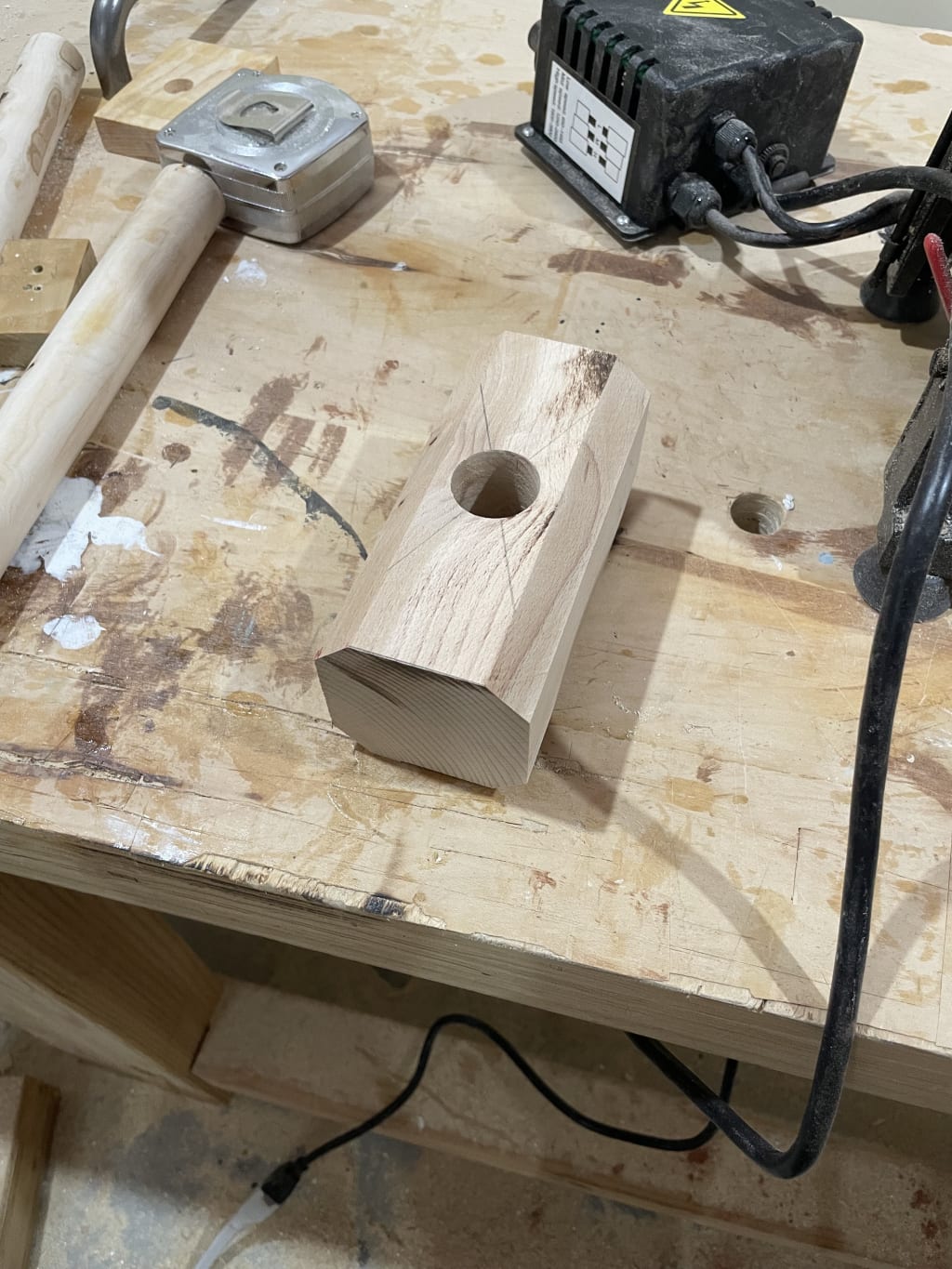
Finally I was able to round it down to the final size, and clean it up with some sand paper. The test fit showed it fits together well, but I would need to trim the handle shorter.

In summary
Building wooden mallets is really fun, and you have a lot of ways to explore different techniques. There are choices on wood, shape, finish, and size! Interestingly, I have not yet made a laminated mallet where I glue three boards together with a handle. Maybe I'll try that soon.
